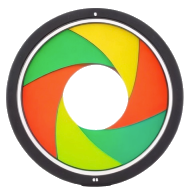Lithium-ion Battery Recycling in South Africa Powering a Circular Economy
South Africa Lithium-ion Battery Recycling Market
South Africa's lithium-ion battery recycling market is at an early stage of development but is expected to grow due to increased demand for EVs and renewable energy storage systems. The country's reliance on mining and natural resources has led to heightened awareness of the environmental impact of raw material extraction. Consequently, efforts are being made to develop recycling infrastructure to recover valuable metals from end-of-life (EOL) batteries.
The government is promoting sustainable waste management through policies that support recycling and resource recovery. Partnerships between battery manufacturers, mining companies, and recycling firms are emerging to establish local battery recycling capabilities. Key players, including EnviroServ Waste Management, are actively working on solutions to recover lithium, cobalt, and other metals from used batteries.
While the market faces challenges such as limited technical capacity, lack of regulatory frameworks, and inadequate collection systems, growing awareness of the circular economy and increased R&D investments are driving growth. As South Africa aims to reduce its dependence on mining, the development of battery recycling capabilities will play a crucial role in supporting sustainable growth.
By 2032, the Lithium-ion Battery Recycling Market is expected to be valued USD 41.27 billion, growing at a CAGR of 20.46%. (2024 - 2032). The worldwide lithium-ion battery recycling market is anticipated to grow as electric vehicle adoption and the use of advanced portable gadgets increase.
Lithium-ion battery recycling refers to the gathering of lithium-ion batteries from a variety of sources, such as automobiles, industrial equipment, consumer goods, and electronic devices, as well as the recovery of metals or other materials through recycling procedures.
The global market estimation covers the income generated from the sale of these recovered metals or elements, regardless of whether they are used in additional battery recycling or other applications that need a second use. According to reports, the majority of metals retrieved are solely used to make batteries.
Government restrictions, environmental safety, and public awareness will all play a big part in how the industry develops. The expansion of the lithium-ion battery recycling industry is anticipated to be constrained by poor separation of hazardous elements from batteries, faulty disassembly, and inappropriate shredding.
Applications for lithium-ion battery technology are widely used and are expected to continue to grow, which will put pressure on recycling obligations and drive the development of the technology and infrastructure required for recycling lithium-ion batteries. The introduction of new features, such as battery installation that is accessible, and the inclusion of protective layers to reduce the danger of fire and short-circuiting, are expected to open up new growth prospects for the worldwide lithium-ion battery recycling market.
Key Players:
- Umicore
- Glencore International AG
- Retriev Technologies Inc.
- Raw Materials Company Inc. (RMC)
- International Metals Reclamation Company
- LLC (INMETCO)
- American Manganese Inc.
- Sitrasa, Li-Cycle Corp.
- Neometals Ltd
- Recupyl Sas
Regional evaluation
North America, Europe, Asia Pacific, and the rest of the world are the regions into which the Li-ion battery recycling market is divided. The United States predominates the lithium-ion battery market in North America. Among the other countries, the U.S. has the biggest market share. Over the projection period, the U.S. is predicted to develop at the quickest CAGR of over 30.2%.
The primary drivers of the market include declining lithium-ion battery prices, increasing adoption of electric cars, growing application in the aerospace industry, expanding renewable energy sector, and rising consumer electronics consumption. The car sector is regarded as one of the most significant end-user industries for lithium-ion batteries. The adoption of electric vehicles is anticipated to provide the lithium-ion battery sector a considerable boost. It is anticipated that rising urbanisation and consumer spending would further drive up demand for these batteries.
Some of the main causes that have propelled the lithium-ion battery market in Europe include rising usage of electric cars, smart portable gadgets, and the expanding grid storage business, as well as governmental assistance for renewable energy and electric vehicle infrastructure projects. The market is furthermore anticipated to expand as a result of the sizable expenditures made in lithium-ion battery manufacturing plants and initiatives, with an emphasis on electric cars and energy storage systems.
Marketing segmentation:
After Use: The market is divided into automotive and non-automotive segments based on end use. The automotive sector is predicted to see the highest CAGR growth of any of them throughout the projection period. The main drivers of this segment's growth in 2020 are the rising use of electric cars and government policies that favour EVs.
based on battery chemistry: The lithium-nickel manganese cobalt (Li-NMC), lithium-iron phosphate (LFP), lithium-manganese oxide (LMO), lithium-titanate oxide (LTO), and lithium-nickel cobalt aluminium oxide market segments are based on battery chemistry (NCA). Wheeled vehicle mobility is enhanced by the high energy density and power of the lightweight lithium-ion battery systems. Furthermore, battery systems are becoming the main source of propulsion power for military transport, combat, and unmanned vehicles as they transition to entirely electric or hybrid systems.
More Trending Reports



